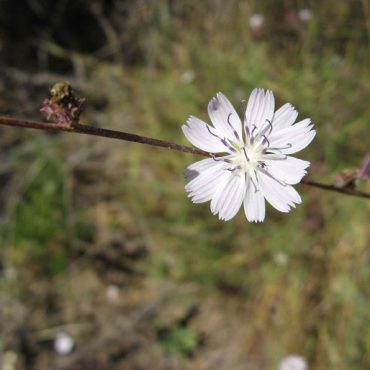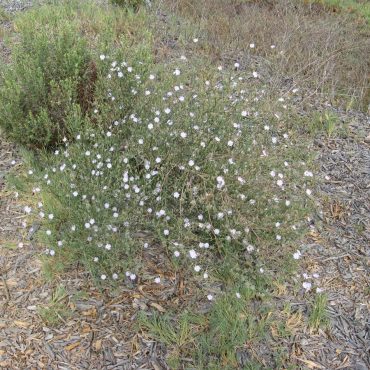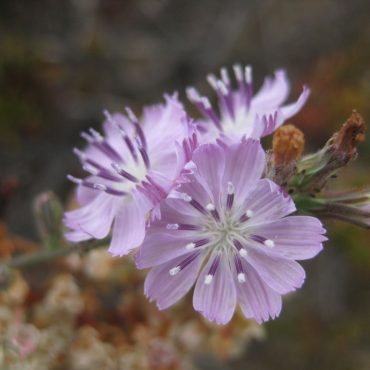Twiggy Wreath Plant
Stephanomeria spp.
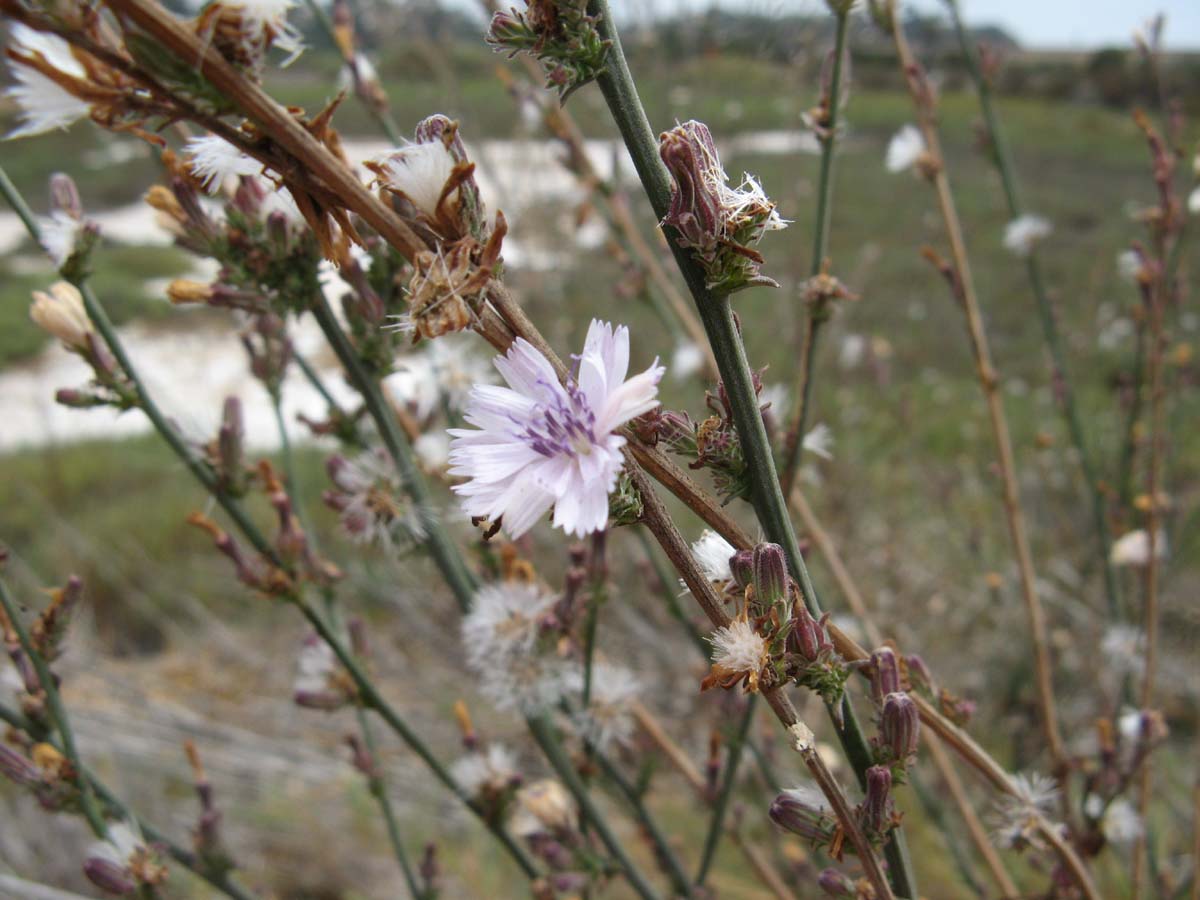
Other Common Names:
wreath plant
Description 2,11,23,59
Twiggy wreath plants are branching, green-stemmed, annual plants, usually less than 6 feet (2.5 m) tall. A basal rosette of leaves disappears before flowering. These leaves are elongate, less than 7 inches (18 cm) in length and irregularly incised along the margins. Cauline leaves are progressively smaller and simpler and are usually withered by flowering time.
Numerous white to lavender flower heads occur on the terminal portions of the branches. Flower heads are less than ¾ inch (2 cm) across and consist of 6-18 ray florets, which are toothed across the end and may be striped with a darker shade; disk florets are absent. Floret color is often deeper underneath. Flower heads resemble pinks or carnations (to which they are not related) rather than daisies (to which they are). The stamens are mostly purple; united in a tube around the pistil, which extends 1-2 mm beyond them. Together, both appear as a white tube with a broad purple band. The striped petals of the opening flower buds give them the appearance of mint candies stuck along the stem. Flowers open in the morning. The major bloom period is late summer through fall, July – January.1
Seeds are small tapered 5-sided cylinders, less than 1/8 inch (3 mm) long, sculpted with ridges and bumps. They are wind-distributed by means of a terminal cluster of feathery white bristles (the pappus) that are slightly longer than the seeds.
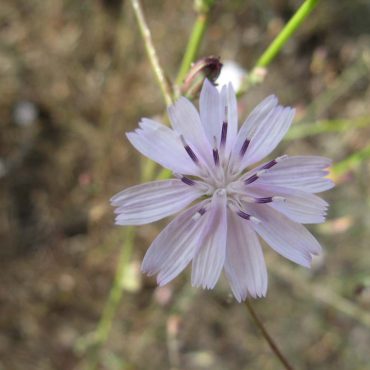
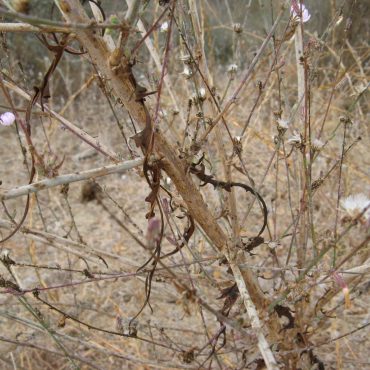
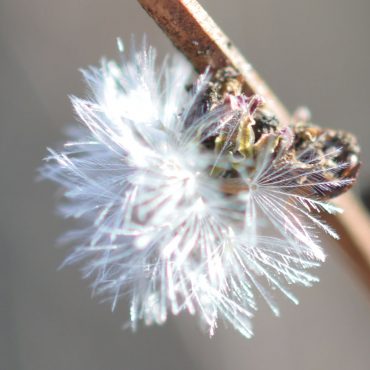
Distribution 5,7,8
Twiggy wreath plants are a wide-spread group of species, native to western North America and found throughout California. They occur below 7,000 feet (2,000 m) in disturbed areas in several vegetation types, including coastal sage scrub, chaparral, and coastal strand.
In the Reserve, they are commonly found along the trails and in openings in the coastal sage scrub and revegetated areas along the Pole Road.
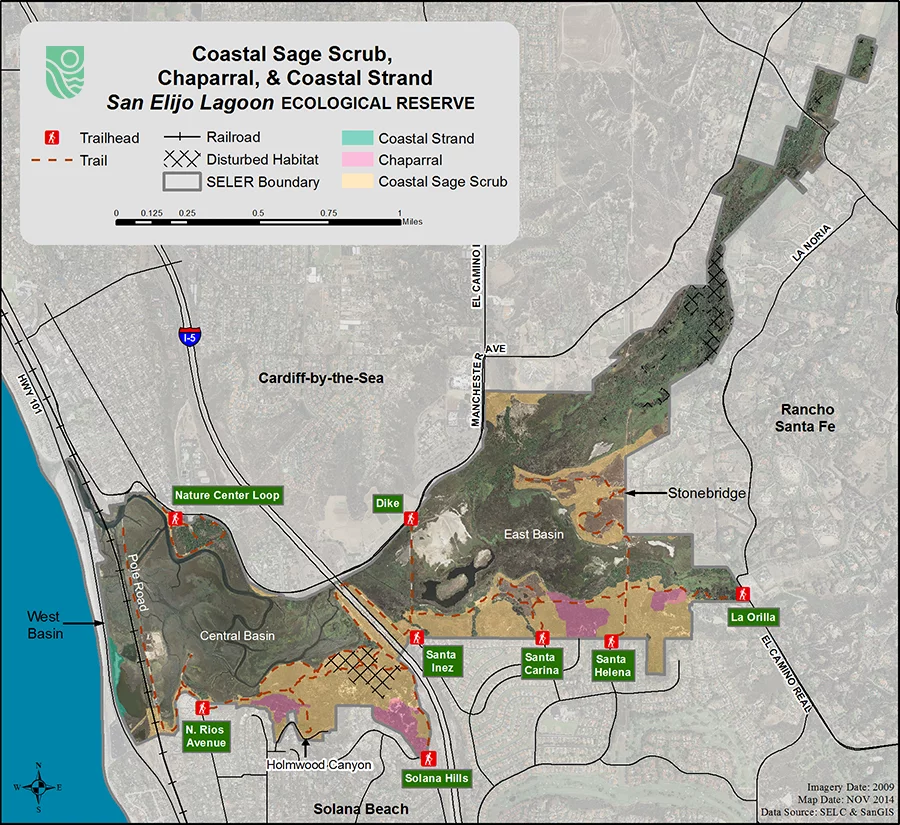
Classification 2,11,34,143
Twiggy wreath plant is a name given to a group of species that are dicot angiosperms in the sunflower family, Asteraceae. This is the largest family of vascular plants in the Northern Hemisphere. “Flowers” of Asteraceae are made up of one or both of two types of flowers (florets): symmetrical disk florets and strapped-shaped ray florets. These are crowded onto a common base (receptacle) and together are often assumed to be a single flower, which is called a flower head.44,49
Other familiar Asteraceae that occur in the Reserve include California sagebrush (Artemisia californica), bush sunflower (Encelia californica), and goldenbush (Isocoma menziesii).
Species of Stephanomeria have only ray florets; they lack the disk florets that form the “eye” of the daisy.
Three species of Stephanomeria have been reported from the Reserve: S. exigua, S. diegensis, and S. virgata spp. pleurocarpa.48 At present, there is uncertainty about the validity of these species.42 A recent Jepson states “Annual species complexly interrelated, distinguished by different combinations or expressions of same traits.” We will leave the solution this puzzle to the experts and here discuss our plants together as one.
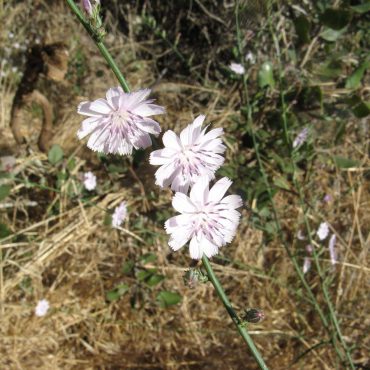
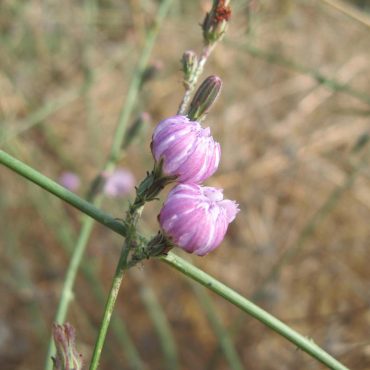
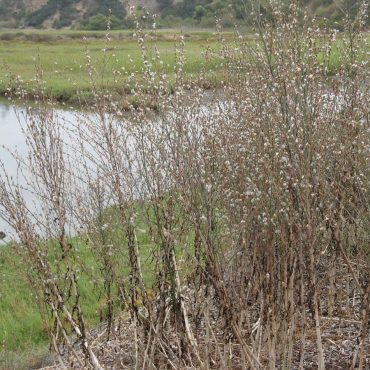
Ecology
Twiggy wreath plant blooms during the driest time of the year. The loss of leaves before flowering is seen in other sage scrub plants, such as deerweed (Acmispon glaber) and sand aster (Corethrogyne filaginfolia) and is presumed to be a strategy to reduce water loss during the dry period.
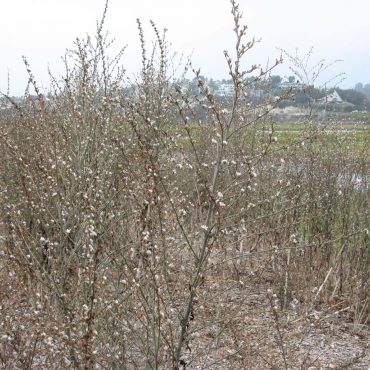
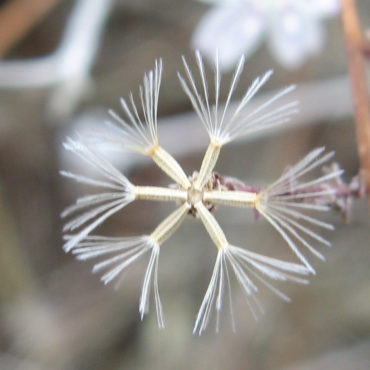
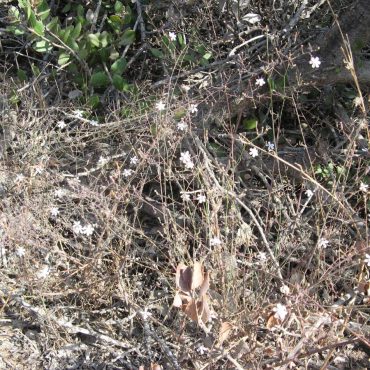
Human Uses 16
The Kumeyaay dried the whole twiggy wreath plant for future medicinal use. A tea from the roots would get rid of intestinal worms. The Spanish used the whole plant in a tea to clean the stomach after a hangover.
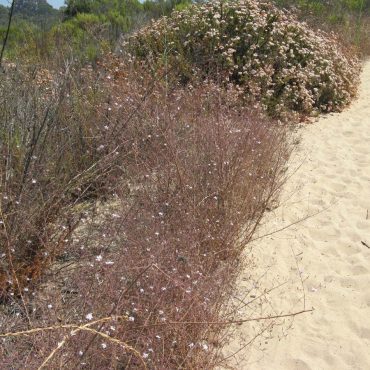
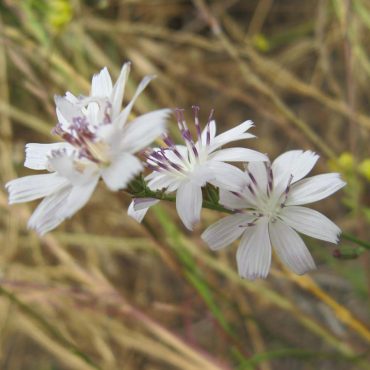
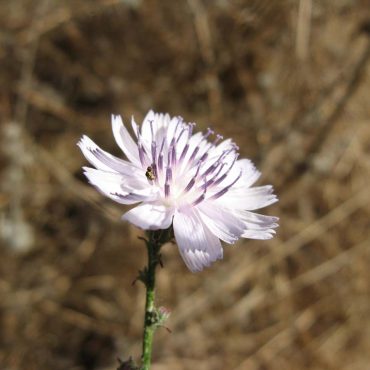
Interesting Facts
The origin of the common name, twiggy wreath plant, comes partly from the Latin genus name Stephanomeria, which in turn comes from the Greek: “stephane”, meaning wreath and “meros” meaning division.21 While the adjective “twiggy” is appropriate, the relationship of this plant to a wreath is a mystery.23
